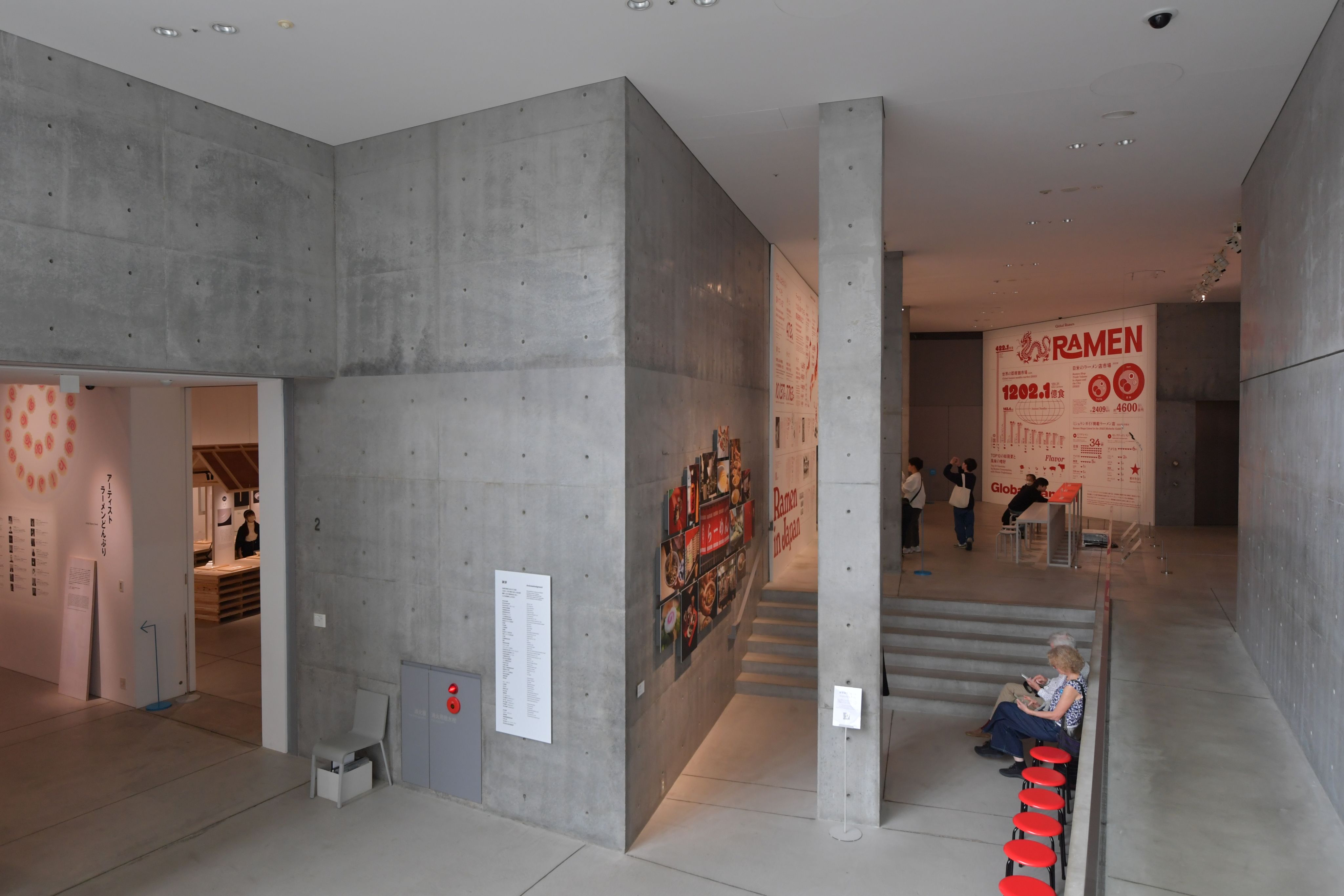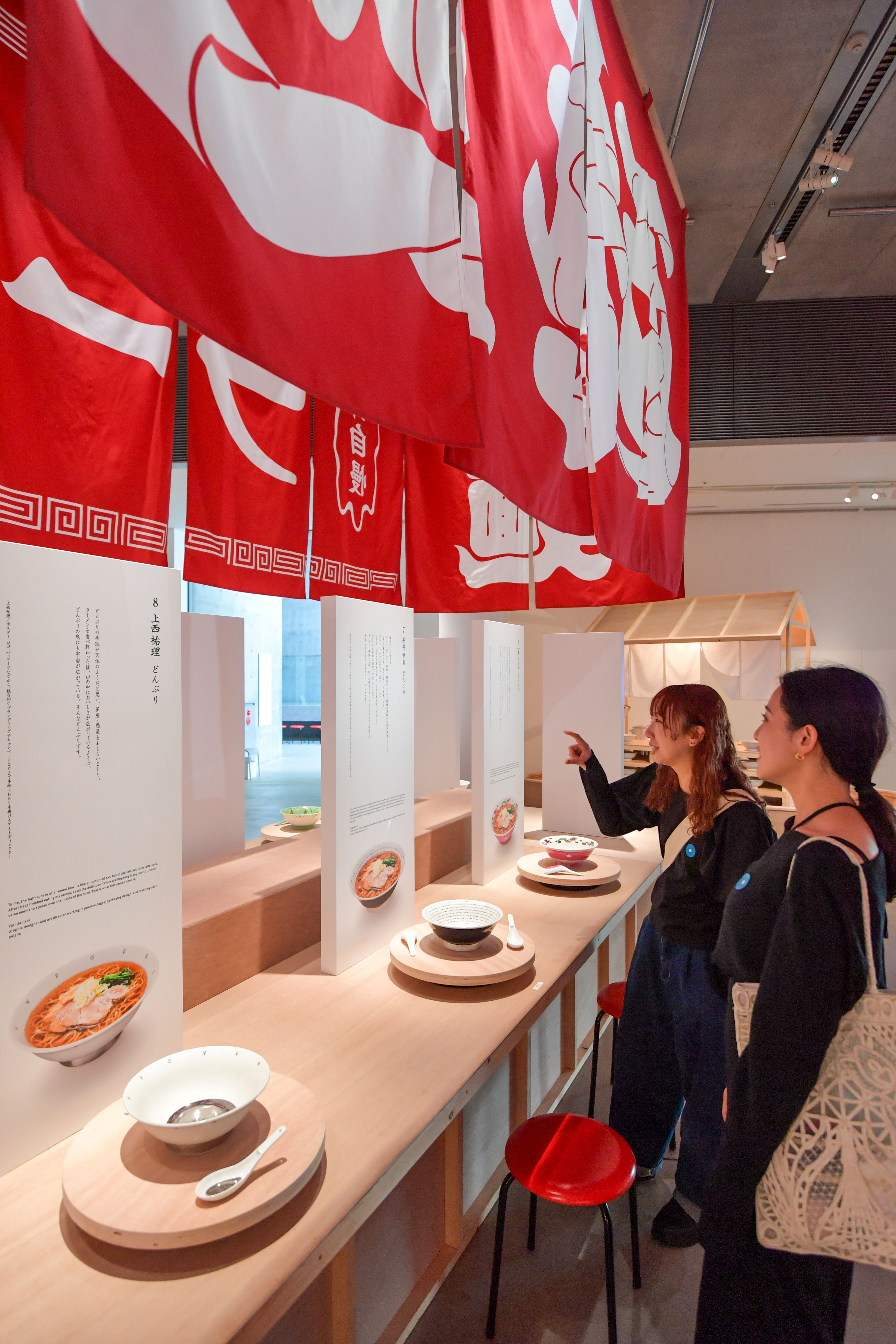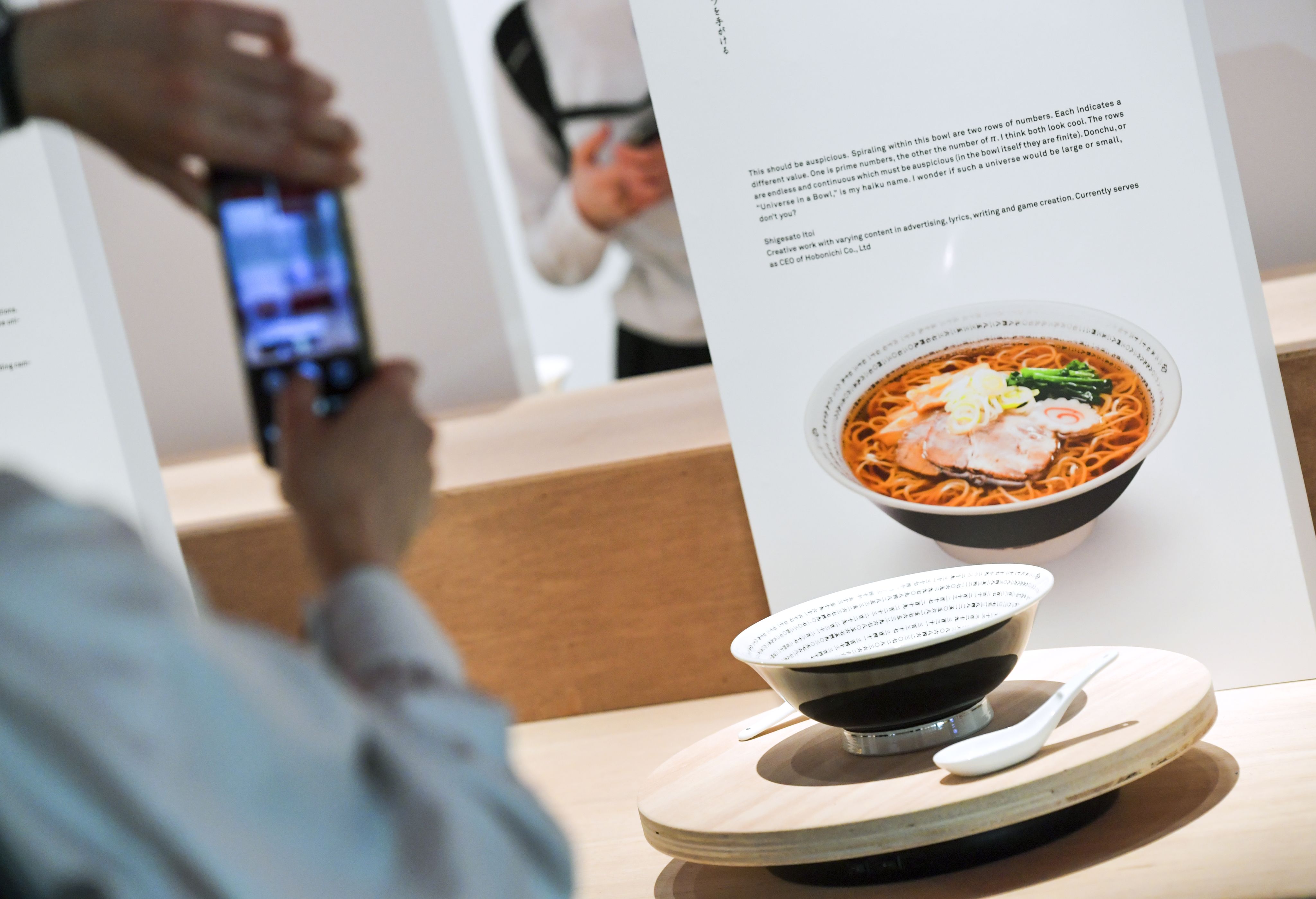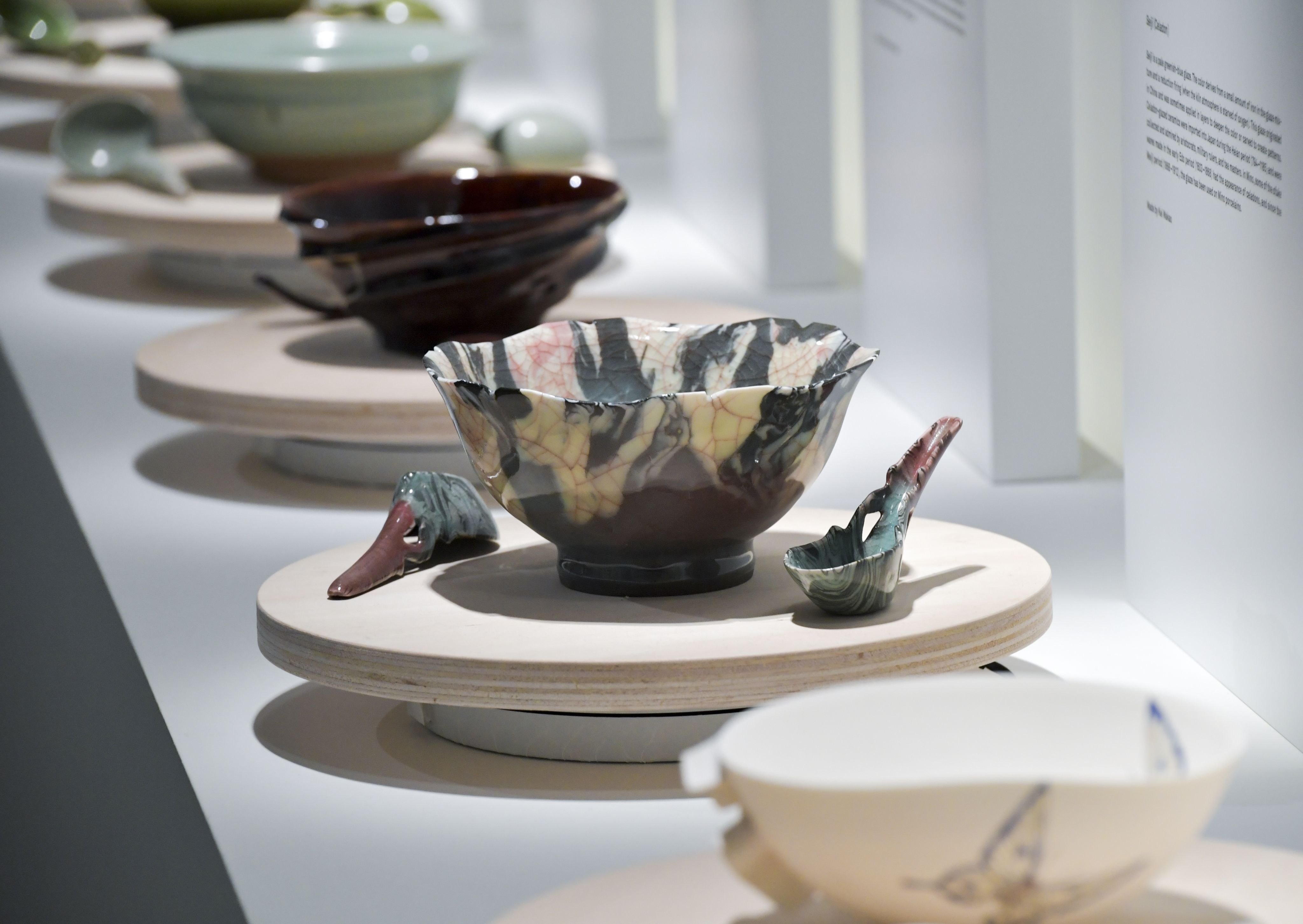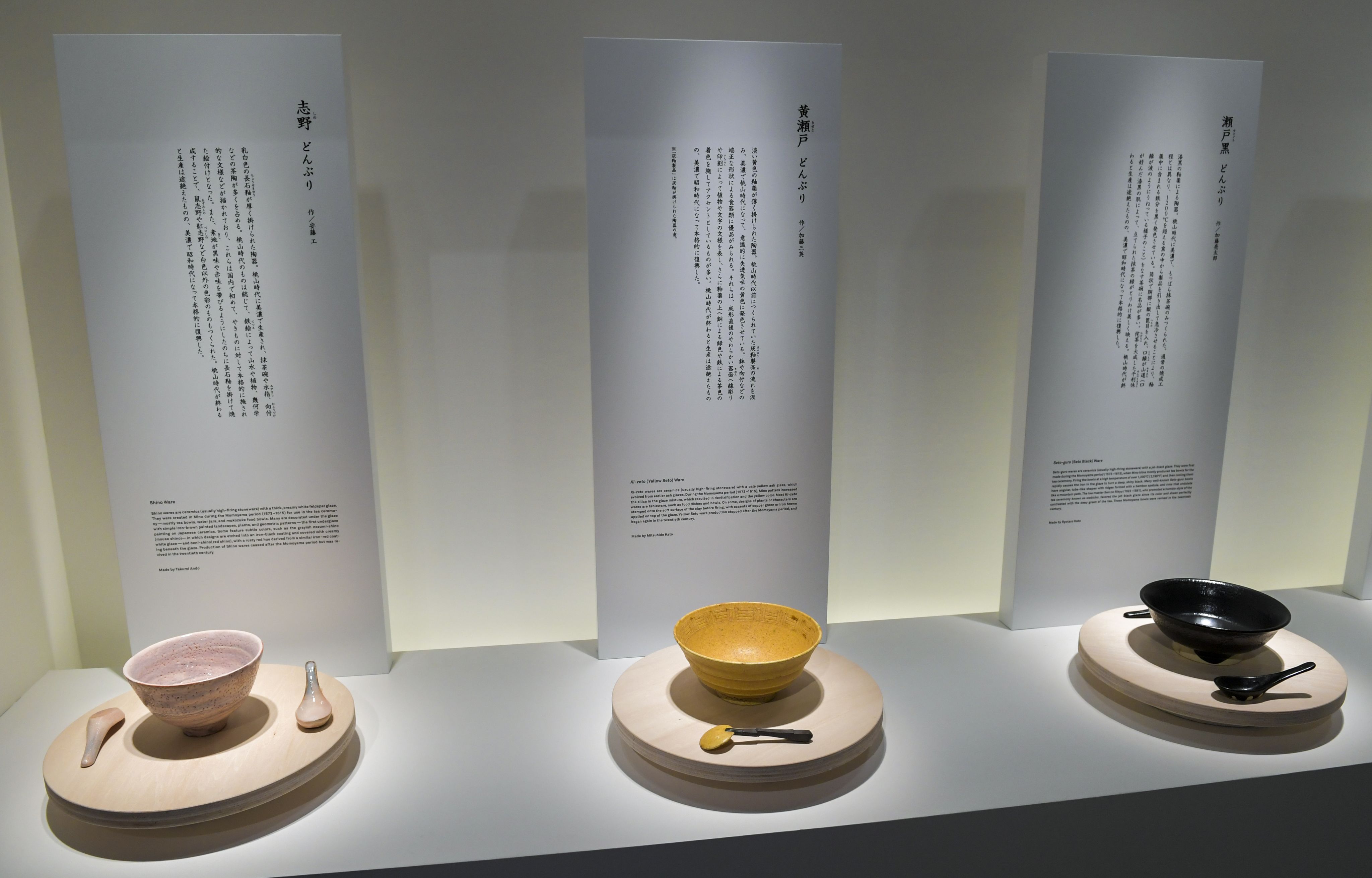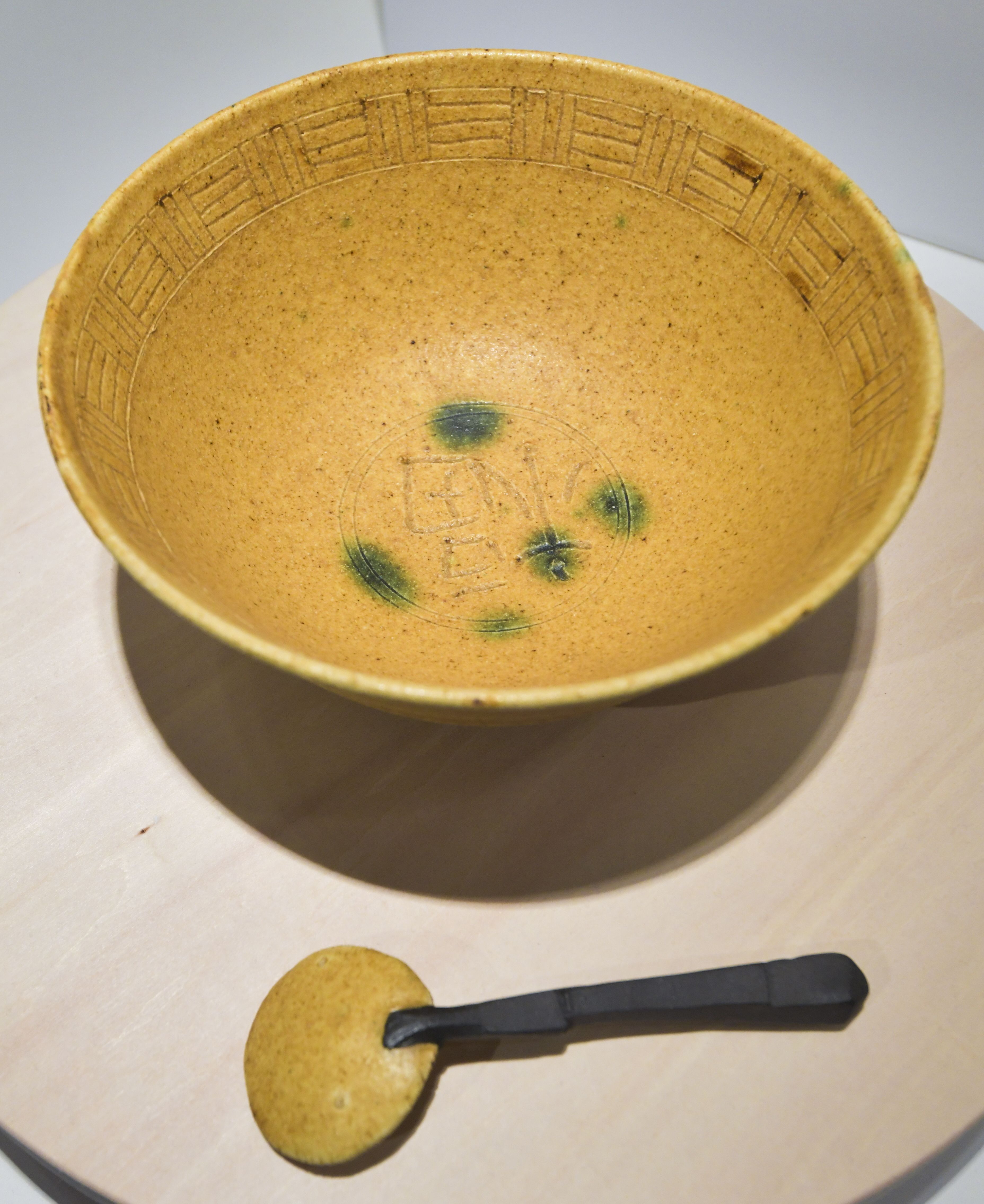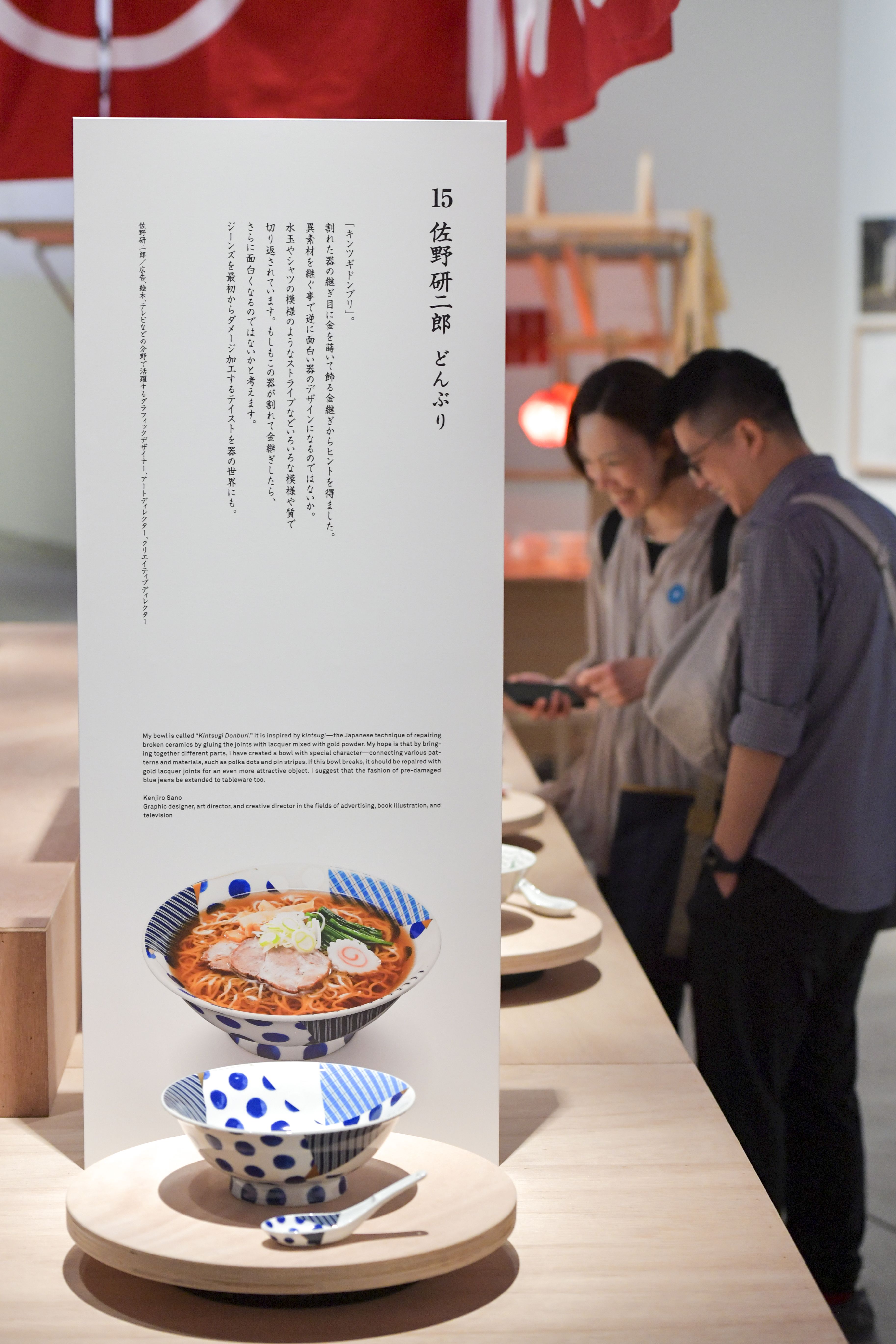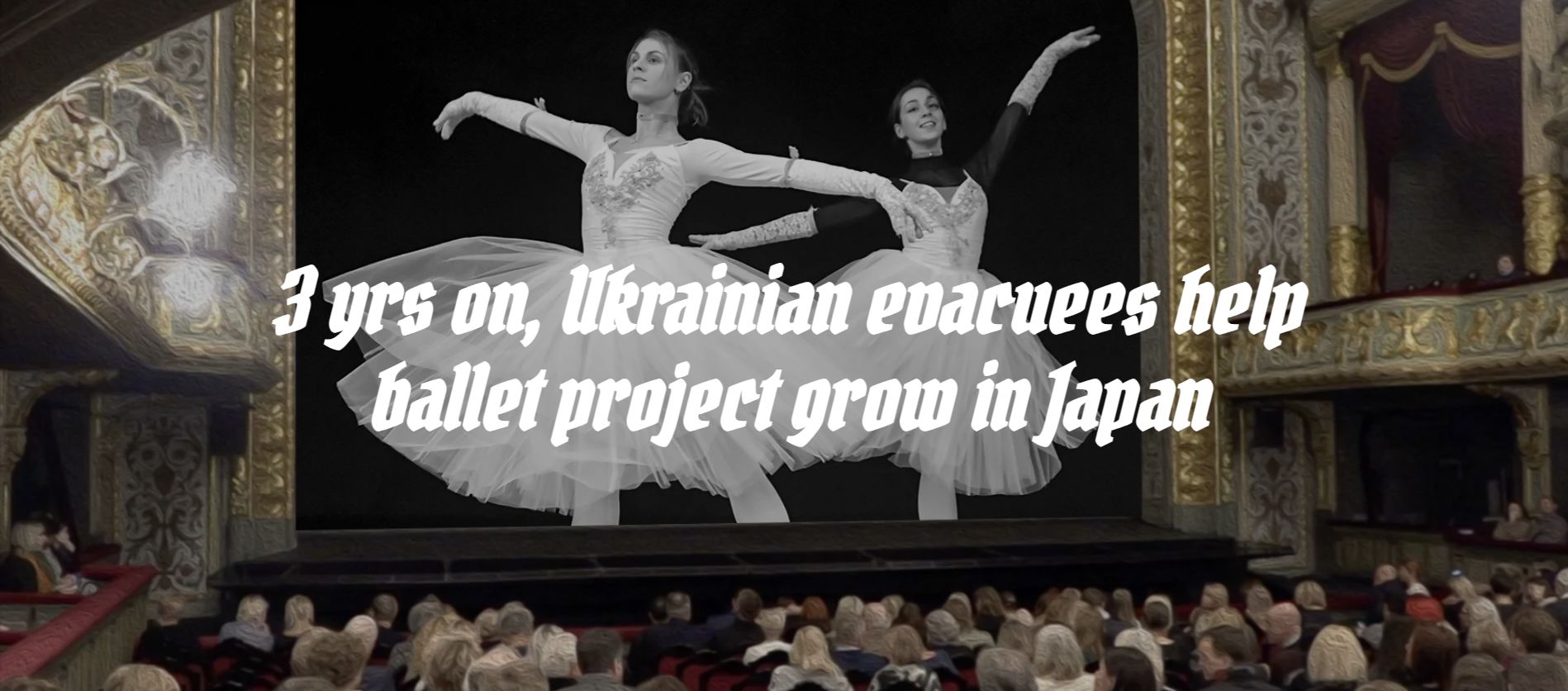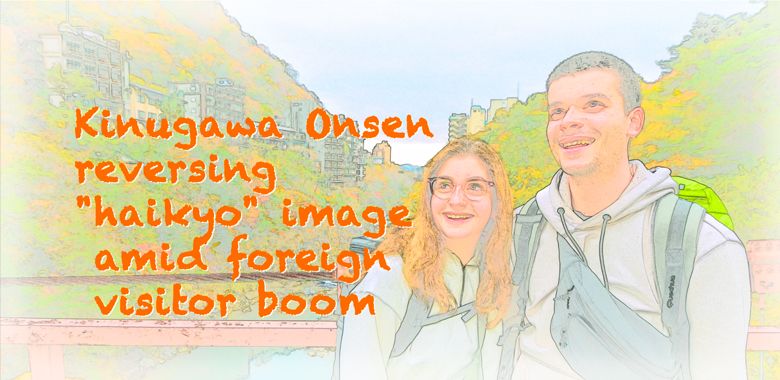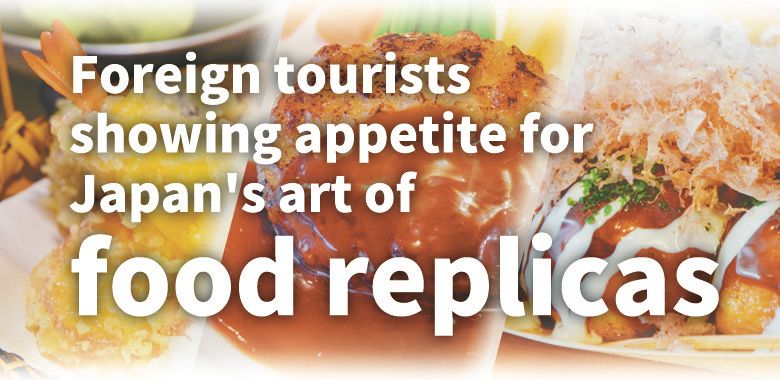Ramen bowls become canvas for art
at Tokyo exhibition

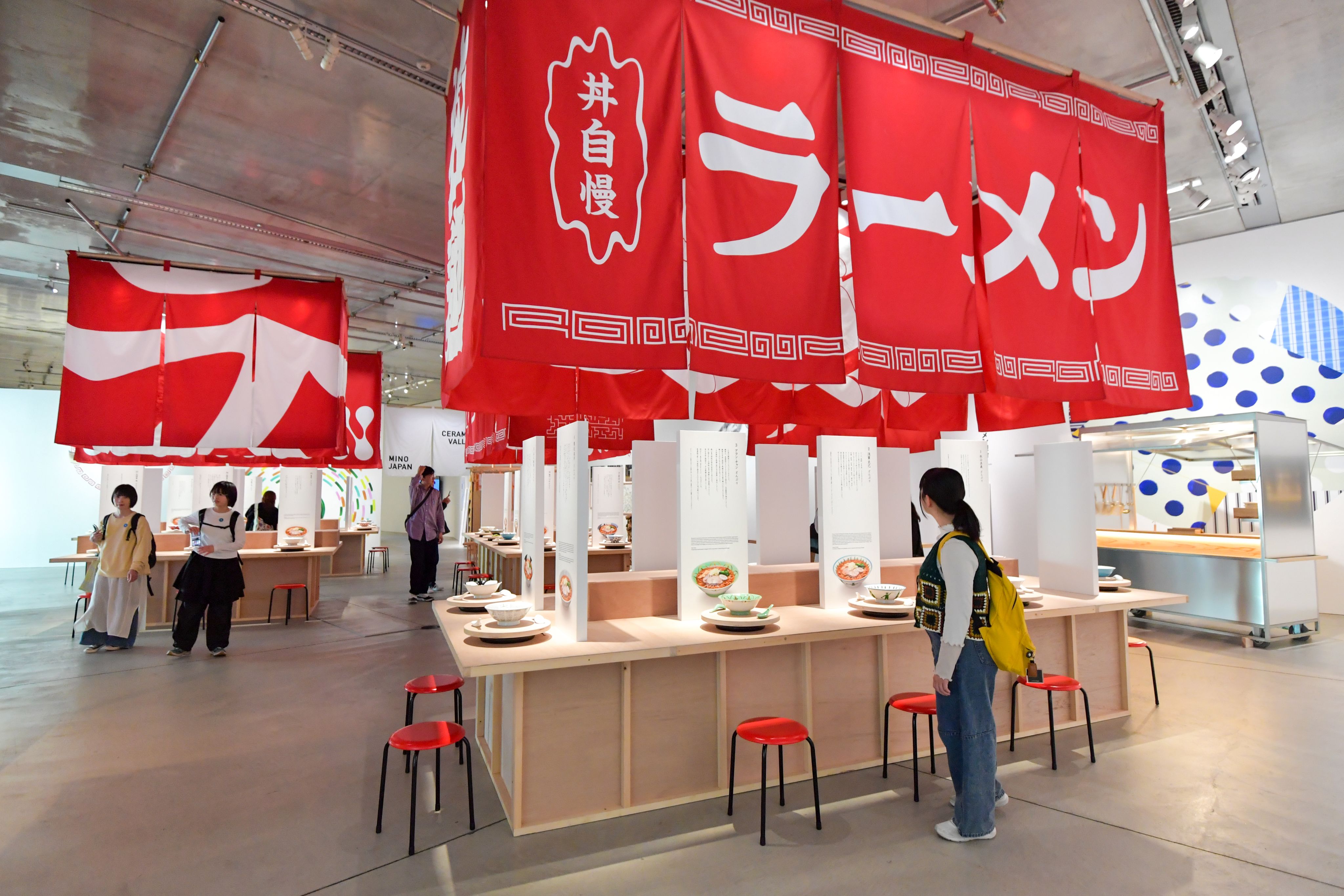
Visitors to a ramen-themed exhibition in Tokyo are served a feast for the eyes with organizers inviting them to view one of Japan’s favorite dishes from the perspective of its bowl.
Ramen bowls are presented as canvases for art at The Art of the RAMEN Bowl exhibition in Tokyo’s Akasaka district. Visitors can see ramen bowl-and-spoon sets featuring graphics designed by artists and creators from a variety of fields.
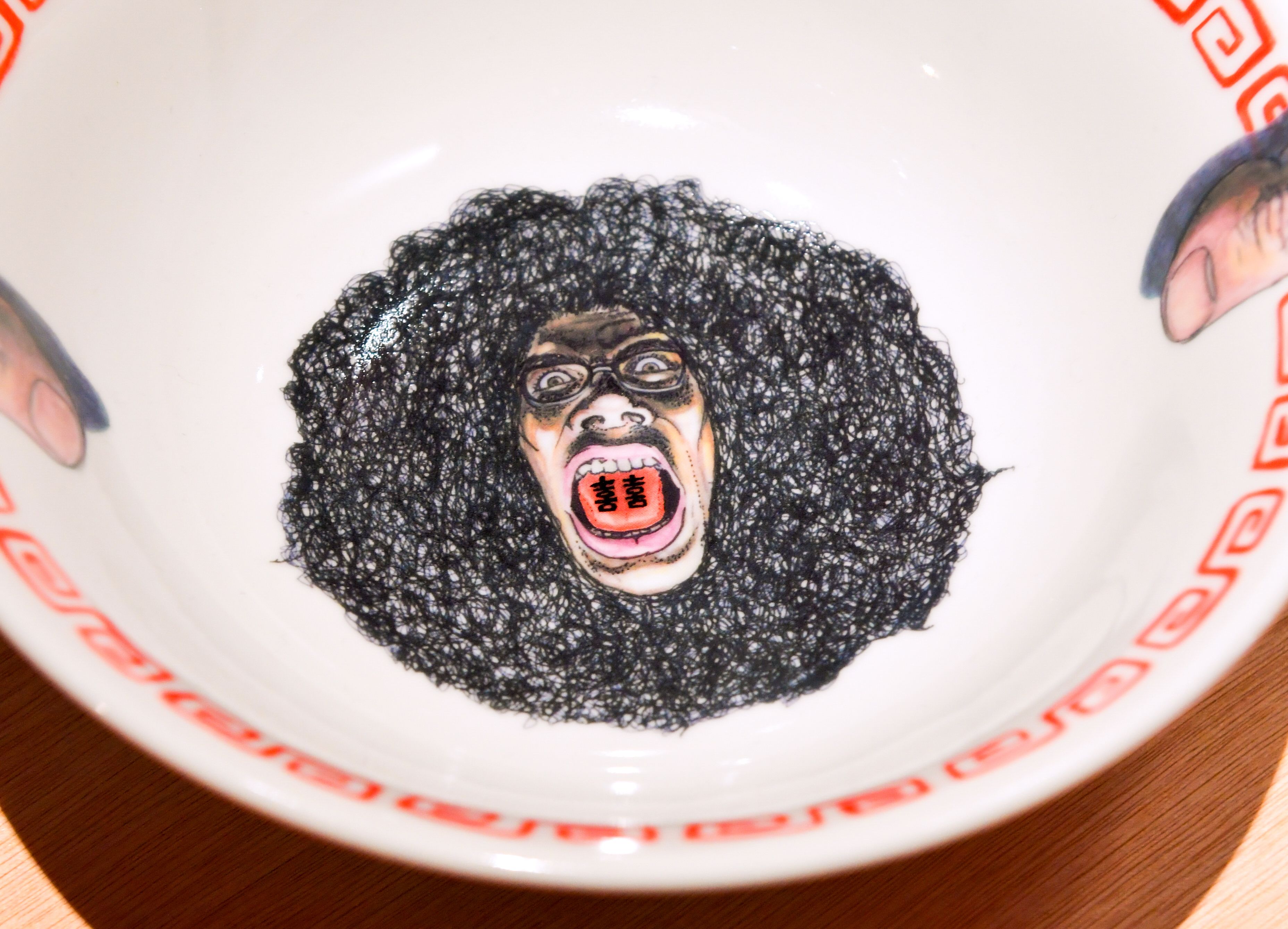
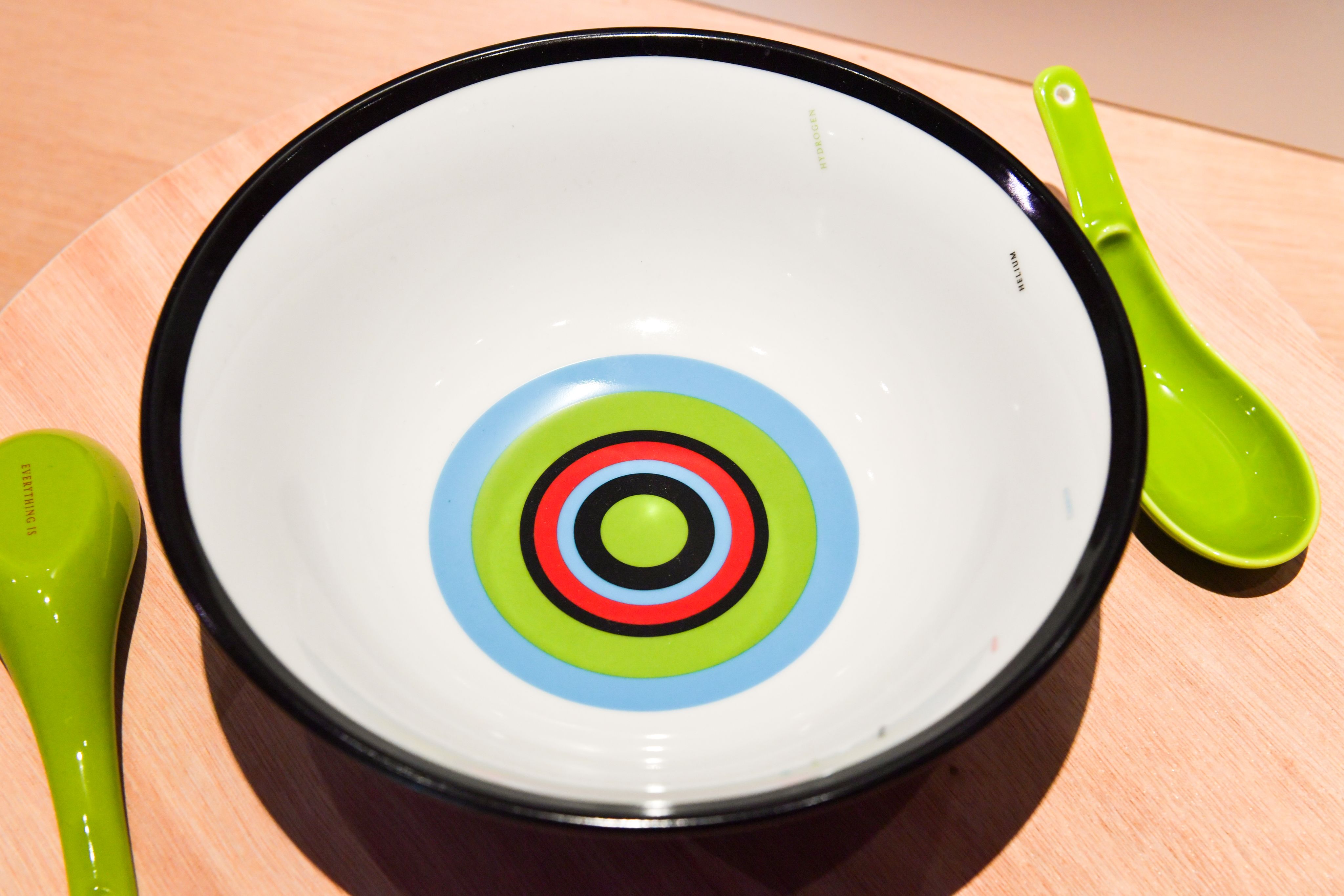
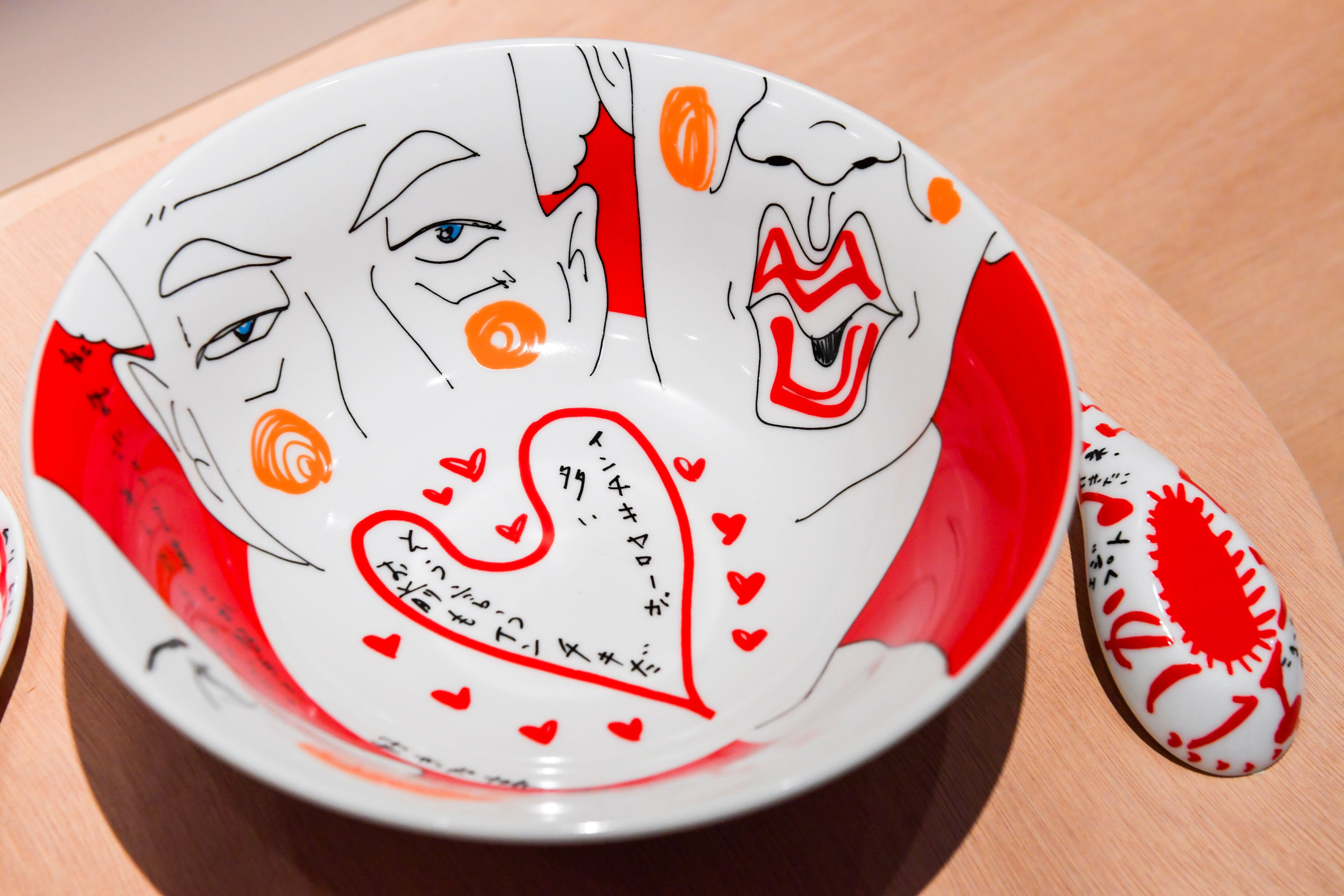
Among the 40 sets on display is a set from Japanese actor and artist Jin Katagiri. A member of the former comedy group Rahmens, Katagiri produced a design which has his own face at the bottom of the ramen bowl.
Another set was designed by Jonathan Barnbrook. The British graphic designer, typographer, and filmmaker is best known for his pioneering font work and record cover designs for David Bowie.
Japanese actor and director Naoto Takenaka contributed a design which is new to the expanded exhibition. On the panel description, occasional comedian Takenaka commented of the design, “this is the Ramen Bowl. Is there anything more to say?”
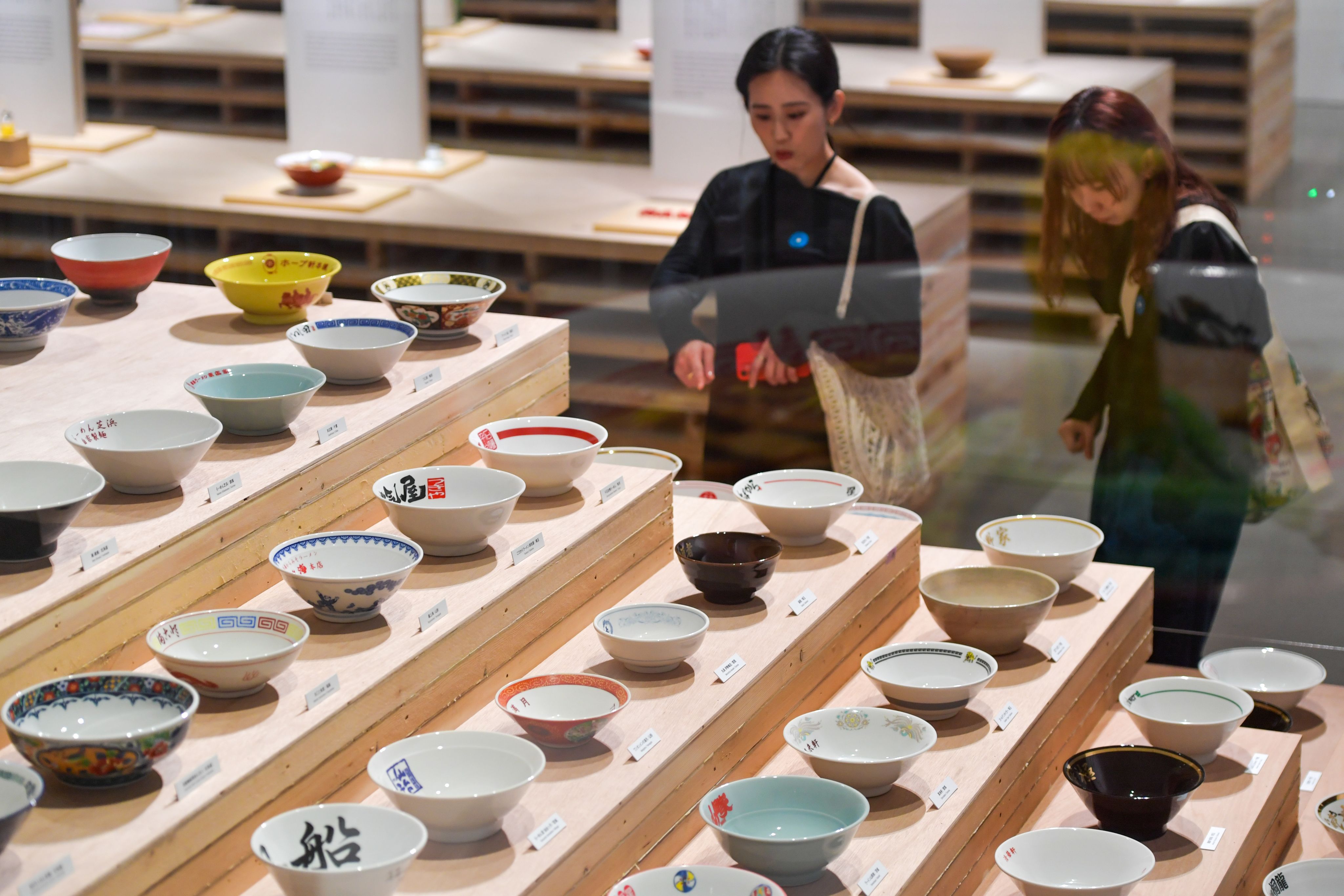
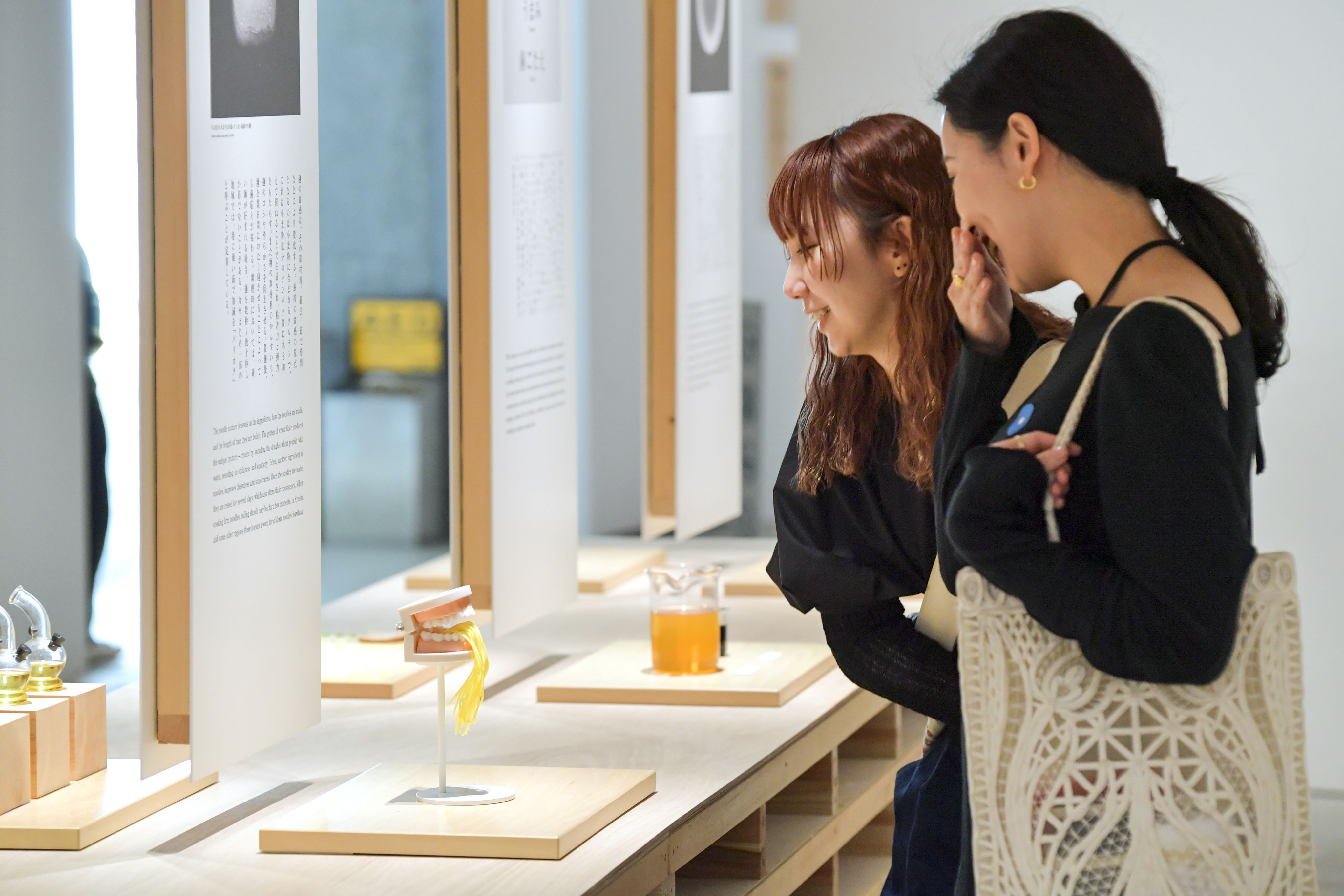
The bowls and spoons are an example of Mino ware, ceramics from the western Tono region of Gifu Prefecture in central Japan. Around 90 percent of ramen bowls made in Japan are produced in the region, according to the exhibition organizers.
Kie Kamemoto and Risa Miyahara were visiting the exhibition during a trip to Tokyo from the southwestern island of Kyushu, where they work as designers.
“I’ve only ever thought of ramen as something to eat,” Kamemoto, 33, said. “I’ve never had the chance to look at the bowl in such detail.”
Miyahara, 33, said that although she likes tableware and often goes to exhibitions, she had never been to one focused on ramen bowls. “I thought it was a really unique exhibition,” she said.
Steff Gornall, visiting Japan from the U.K. with his partner, said he enjoyed the variety of artists that had contributed to the exhibition. The 26-year-old pointed to a ramen keychain on his bag. “I love ramen, so it’s a good activity for the afternoon,” he said.
For another section of the exhibition Taku Satoh, one of the exhibition directors, uses a so-called “design anatomy” method to analyze ramen and ramen bowls from several design viewpoints.
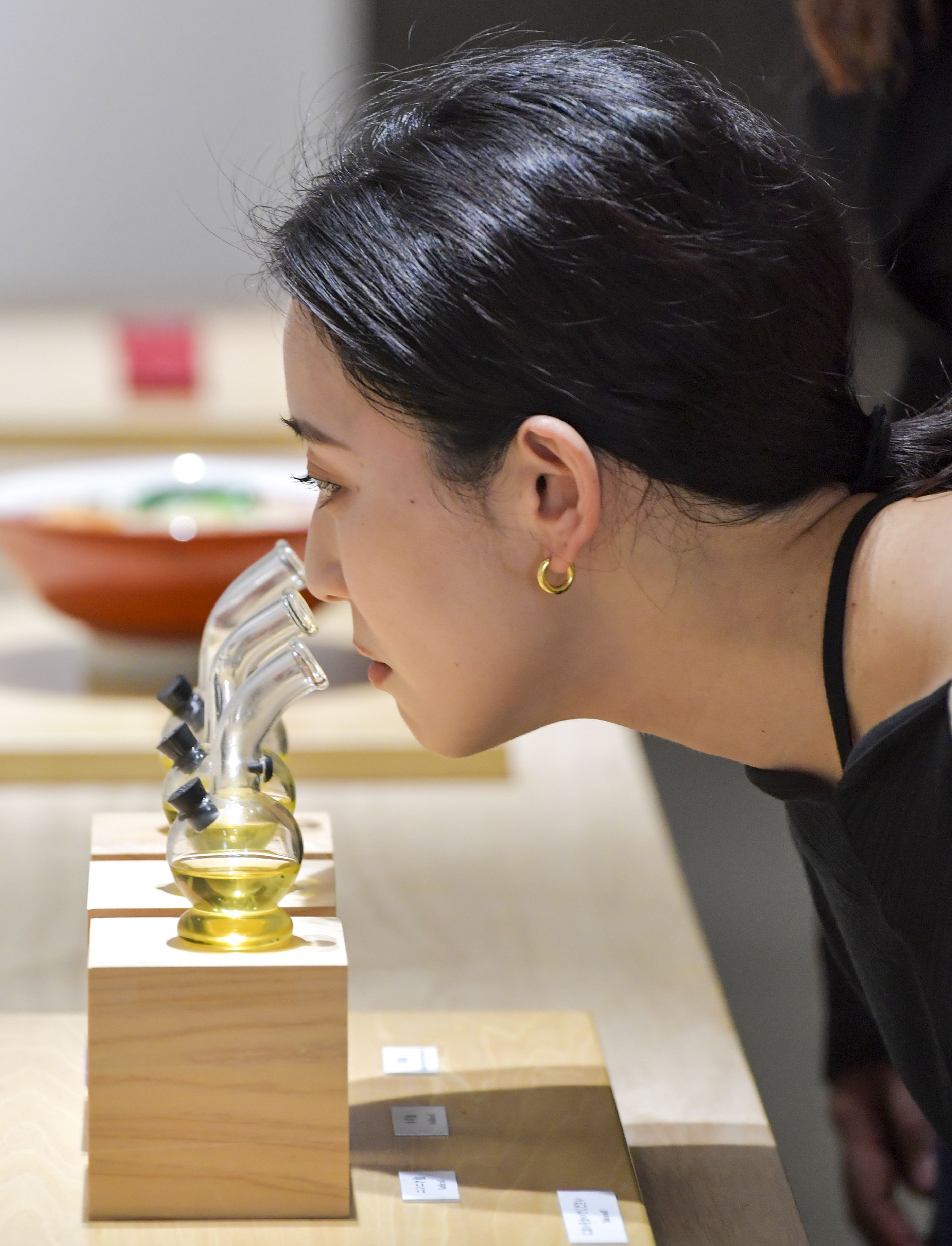
Visitors are presented with curious insights including average eating times, aromas, and temperatures inside the bowl that affect the eating experience. Satoh, a graphic designer, said the idea is to spark interest in the design of everyday items.
“Everyone thinks they know what a ramen bowl is, right? The idea is to make people realize how little they actually know about things they think they know,” Satoh told Kyodo News Plus.
The exhibition is part of on-going efforts from the directors to spread awareness about the production and culture of Mino ware ceramics.
Ramen bowls with traditional techniques by Mino potters on display at the exhibition.
Ramen bowls with traditional techniques by Mino potters on display at the exhibition.
Production of Mino ware dates back over 1,300 years. Today, many production sites are located in the cities of Tajimi, Toki, and Mizunami. Output covers a broad spectrum, from tableware and art to building materials and parts for precision equipment.
This variety is seen as a strength of Mino ware, but it also presents a challenge for the industry, making it hard to define. People may have heard of Mino ware, but they do not have a clear image of what it is, according to Satoh.
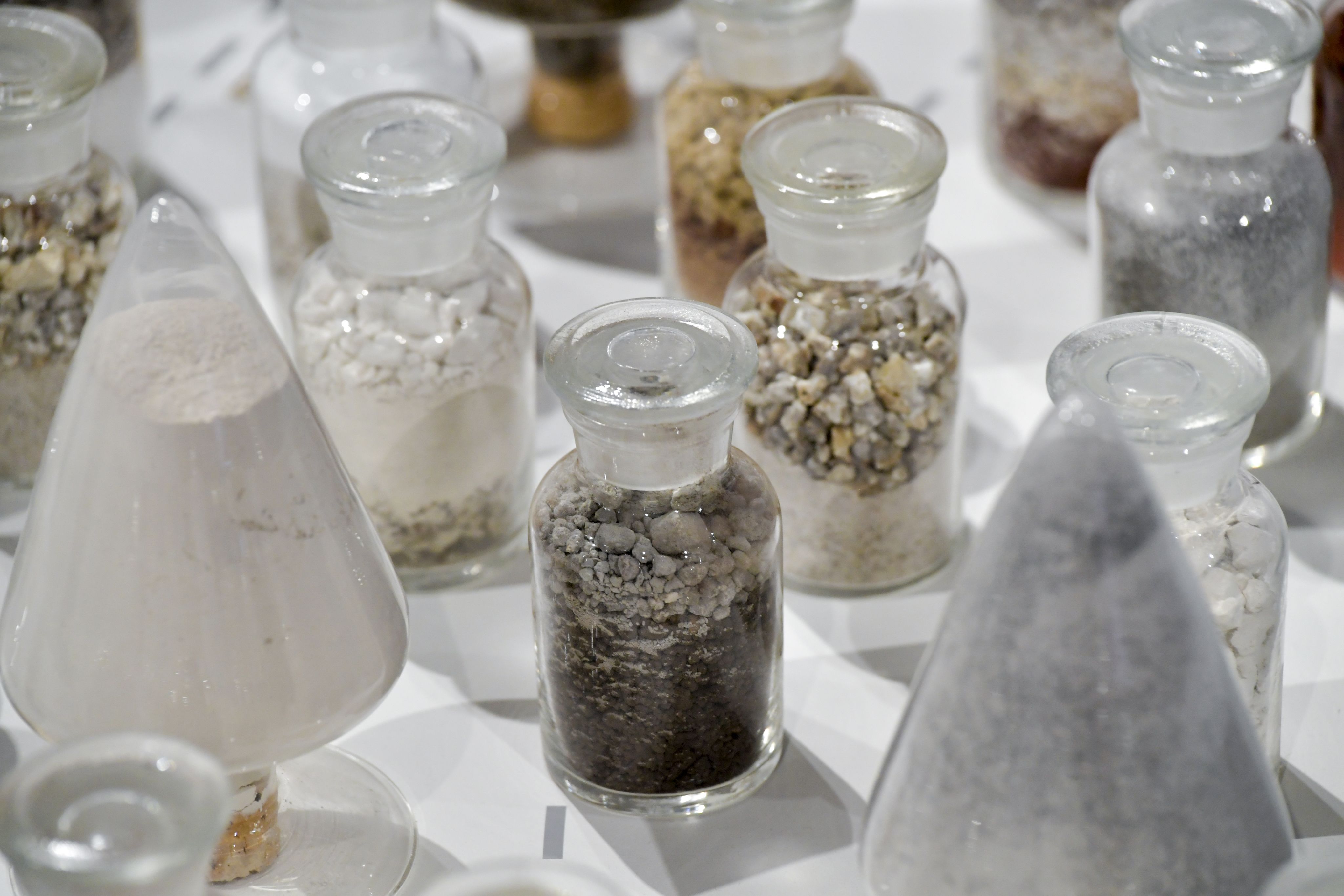
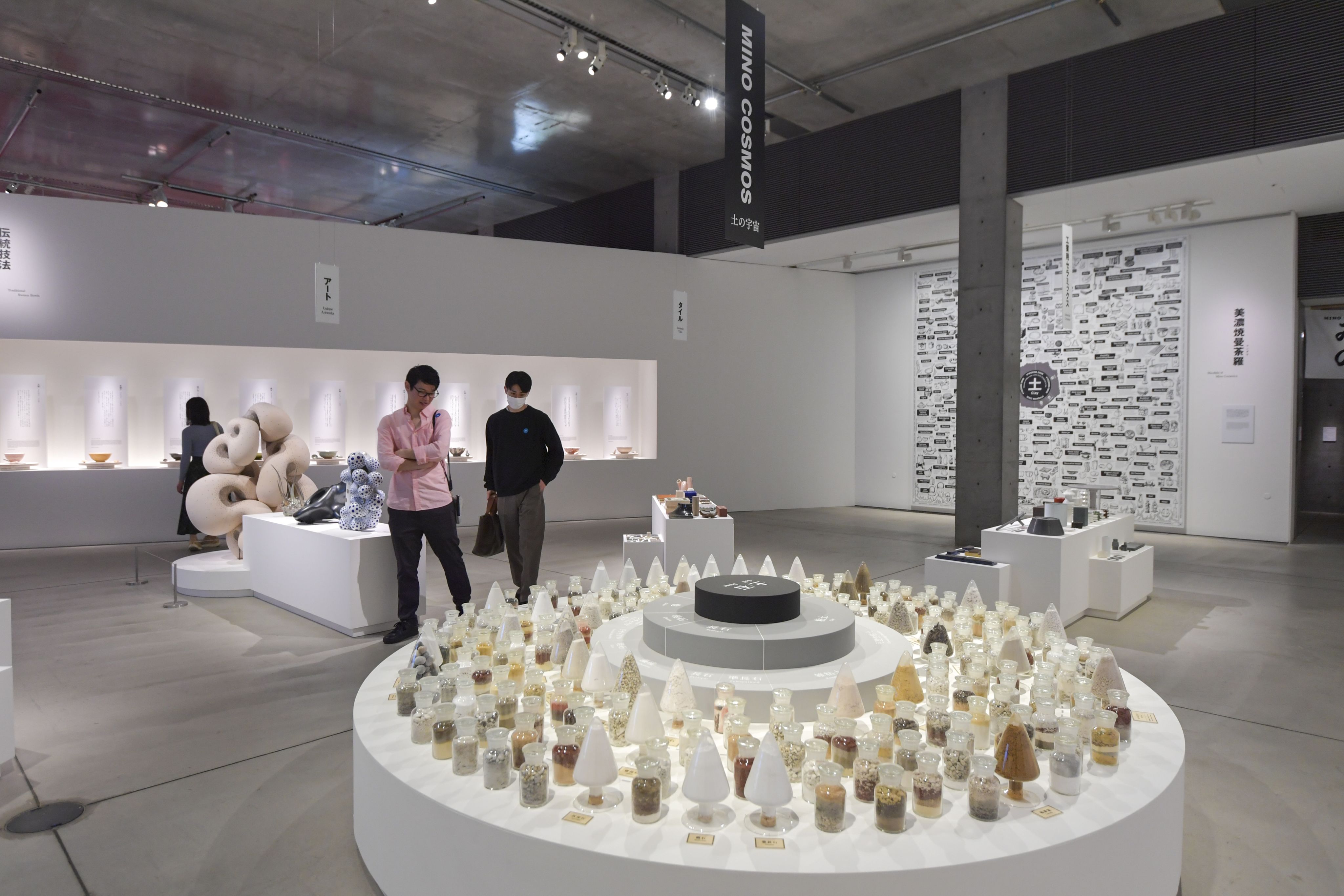
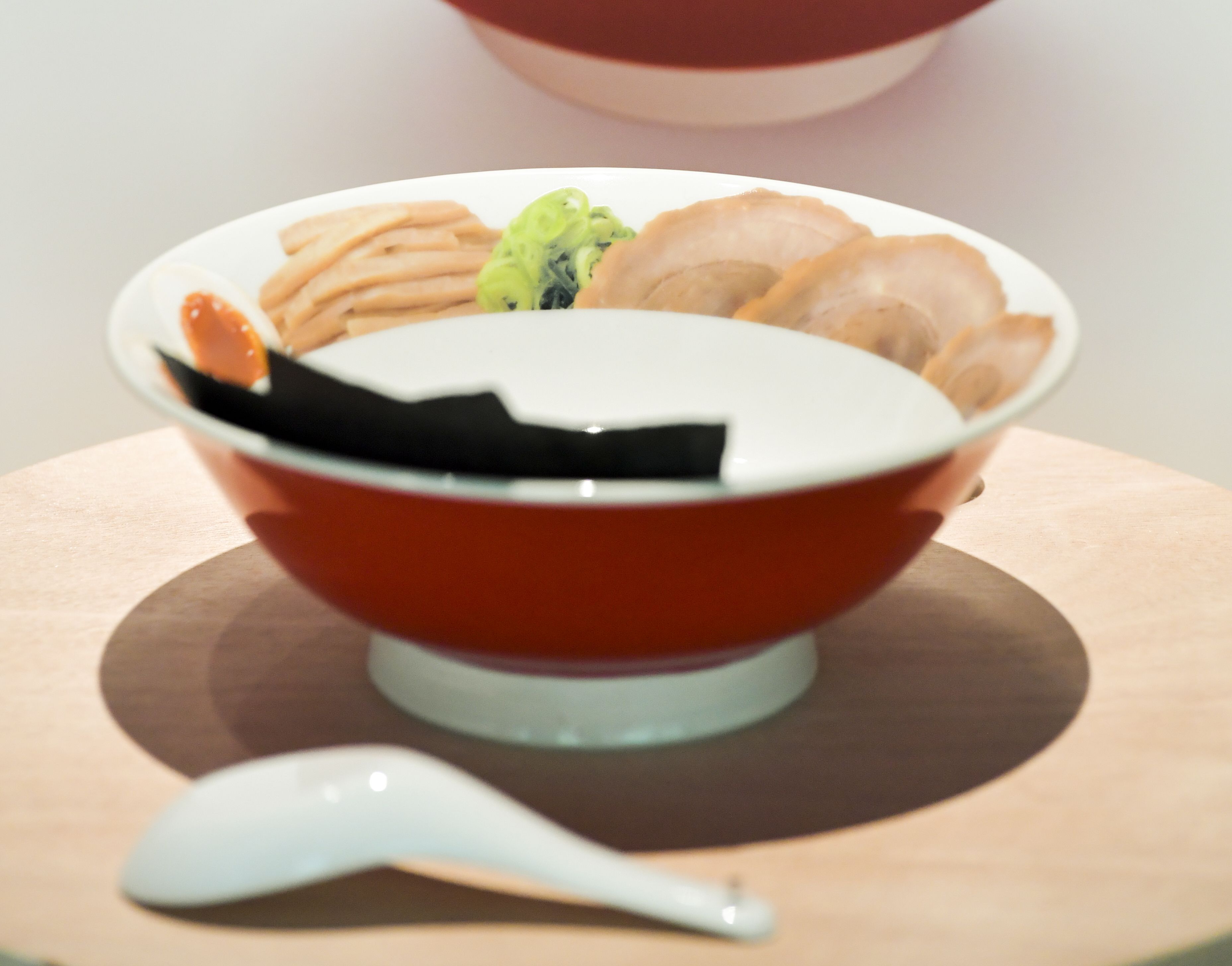

Promotion has often focused on Mino’s traditional ceramics. Styles including Shino and Setoguro are held up as examples of traditional Japanese culture, but Satoh said they may also represent a culture which people feel is above them.
Satoh saw Mino’s ramen bowls, together with the Japanese love for ramen and the down-to-earth nature of ramen culture, as a kinder introduction to Mino ware.
Ramen bowls with traditional techniques by Mino potters on display at the exhibition.
Ramen bowls with traditional techniques by Mino potters on display at the exhibition.
While the ramen bowl might seem an unlikely subject for art, the director pointed out that artists have been painting on ceramics since the Momoyama Period (from the late 16th century). “We just replaced them with ramen bowls,” he said.
Photo shows a “Ki-zeto ware,” or yellow Seto ware, ramen bowl-and-spoon set made by Mino potter Mitsuhide Kato.
Photo shows a “Ki-zeto ware,” or yellow Seto ware, ramen bowl-and-spoon set made by Mino potter Mitsuhide Kato.
The exhibition is an expansion of a ramen bowl exhibition Satoh and fellow director Mari Hashimoto organized at a small gallery in Tokyo’s Ginza district in 2014. The exhibition has continued to grow since.
In 2022, an expanded exhibition showcased ramen culture and ramen bowls to audiences in Los Angeles and Sao Paulo at facilities established by the Foreign Ministry. It returned to Japan for an international ceramics festival in Gifu in 2024.
Now back in Tokyo, at design gallery 21_21 DESIGN SIGHT through June 15, the exhibition includes additional bowl-and-spoon designs from 10 new artists among the expanded exhibits.
This article was submitted by a contributing writer for publication on Kyodo News Plus.
Text : Tom Shuttleworth
Photos : Yuki Murayama
Production Support : Kevin Chow, Janice Tang, Gus Fielding

Other Spotlight Japan Stories
School experience helping tourists scrub up on Japanese educatin
Elements of the country's school system, viewed as a microcosm of society and a building block of Japanese identity, can be experienced at a once abandoned junior high school in Kimitsu, Chiba Prefecture, where uniform-clad foreigners live a day in the life of a Japanese high school student.
3 yrs on, Ukrainian evacuees help ballet project grow in Japan
Ukrainian ballet dancers Nelia Ivanova and Svitlana Shlikhter were deeply moved when the audience gave a standing ovation during their Japan-based troupe's performance in Latvia ahead of the third anniversary of Russia's full-scale invasion of Ukraine.
Kinugawa Onsen reversing "haikyo" image amid foreign visitor boom
On the banks of Kinugawa River, a row of abandoned, crumbling hotels stands like a relic of a forgotten past. A destination that once thrived as a hot spring resort during Japan's bubble economy era of the 1980s, many parts of Kinugawa Onsen have now fallen silent.
Foreign tourists showing appetite for Japan's art of food replicas
Hands-on lessons in the art of creating food replicas have caught on with foreign visitors keen to learn more about a distinctive Japanese craft that has evolved for over 100 years.
The Company uses Google Analytics, an access analysis tool provided by Google. Google Analytics uses cookies to track use of the Service. (Client ID / IP address / Viewing page URL / Referrer / Device type / Operating system / Browser type / Language /Screen resolution) Users can prevent Google Analytics, as used by the Company, from tracking their use of the Service by downloading and installing the Google Analytics opt-out add-on provided by Google, and changing the add-on settings on their browser. (https://tools.google.com/dlpage/gaoptout) For more information about how Google handles collected data: Google Analytics Terms of Service (https://policies.google.com/technologies/cookies?hl=en#types-of-cookies) Google Privacy & Terms(https://policies.google.com/privacy)
© Kyodo News. All Rights Reserved. No reproduction or republication without written permission.


